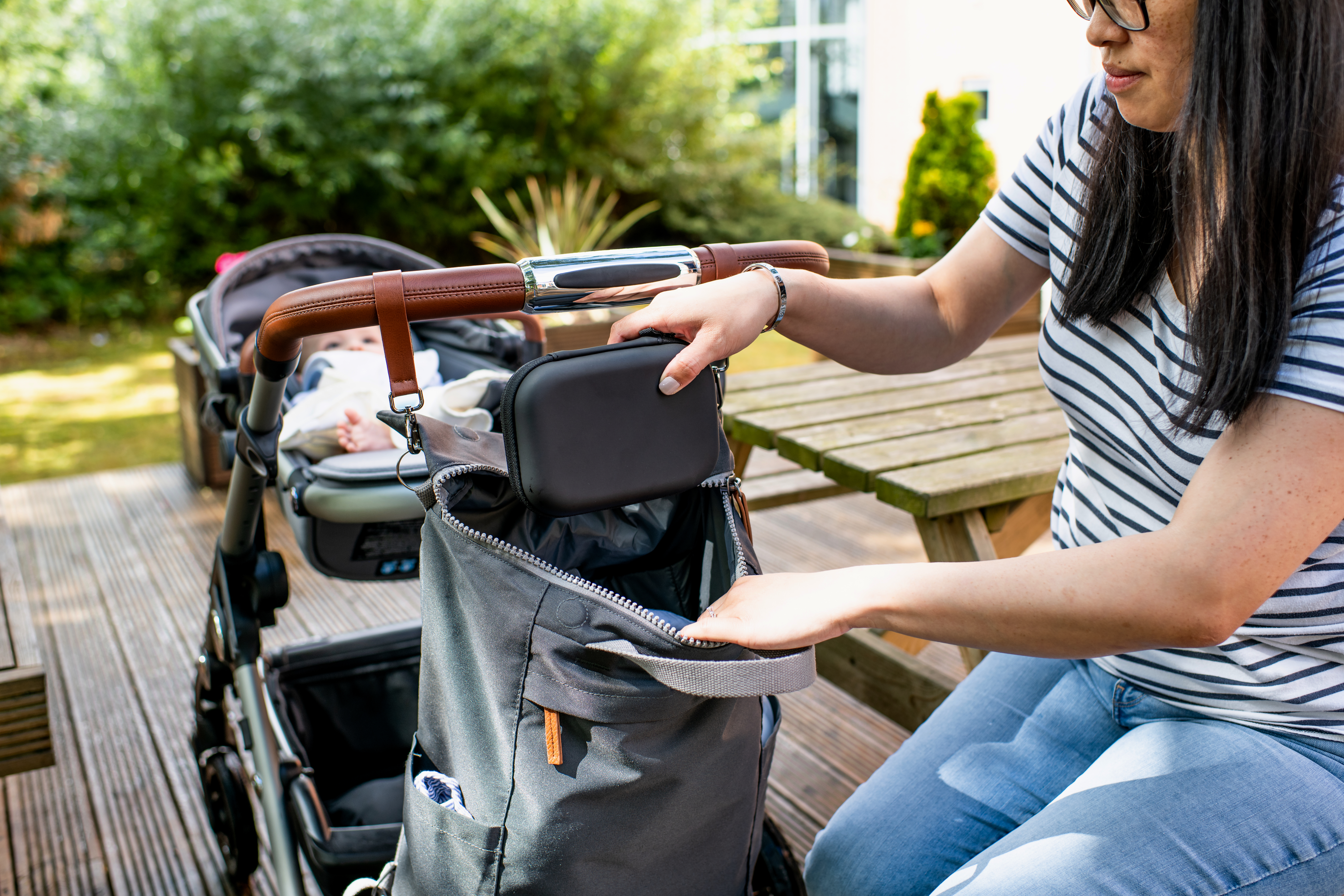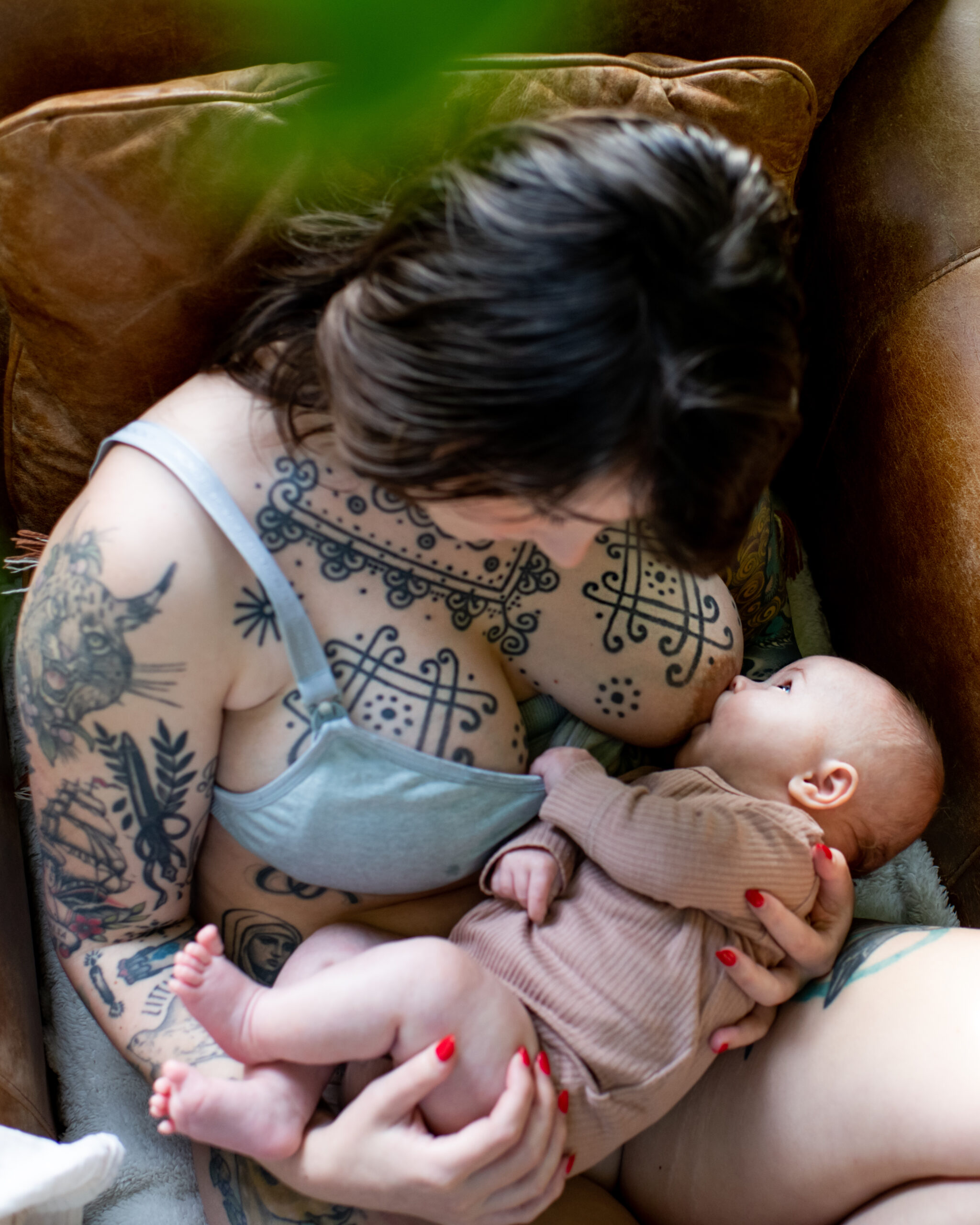When it comes to breastfeeding your baby, there’s no one-size-fits-all position, and it may take a couple of tries before you figure out which position works best for you and your little one.
Discover some of the most popular different breastfeeding positions and read our helpful breastfeeding tips for helping your baby successfully latch and unlatch.
Choosing the right newborn breastfeeding position for you
The ‘right’ position for breastfeeding your baby depends entirely on what’s most comfortable for both you and them. You may find that certain positions are easier for different scenarios, or that you’ll need to change positions as your baby grows.
Laid-back breastfeeding
Also known as “biological nursing”, the laid-back breastfeeding position for babies gives you and your baby snug comfort and support. Simply lean back on your bed or in a chair and support yourself with pillows in a position that’s semi-reclined. This position encourages your baby to latch on naturally, and all you have to do is lie back and relax.
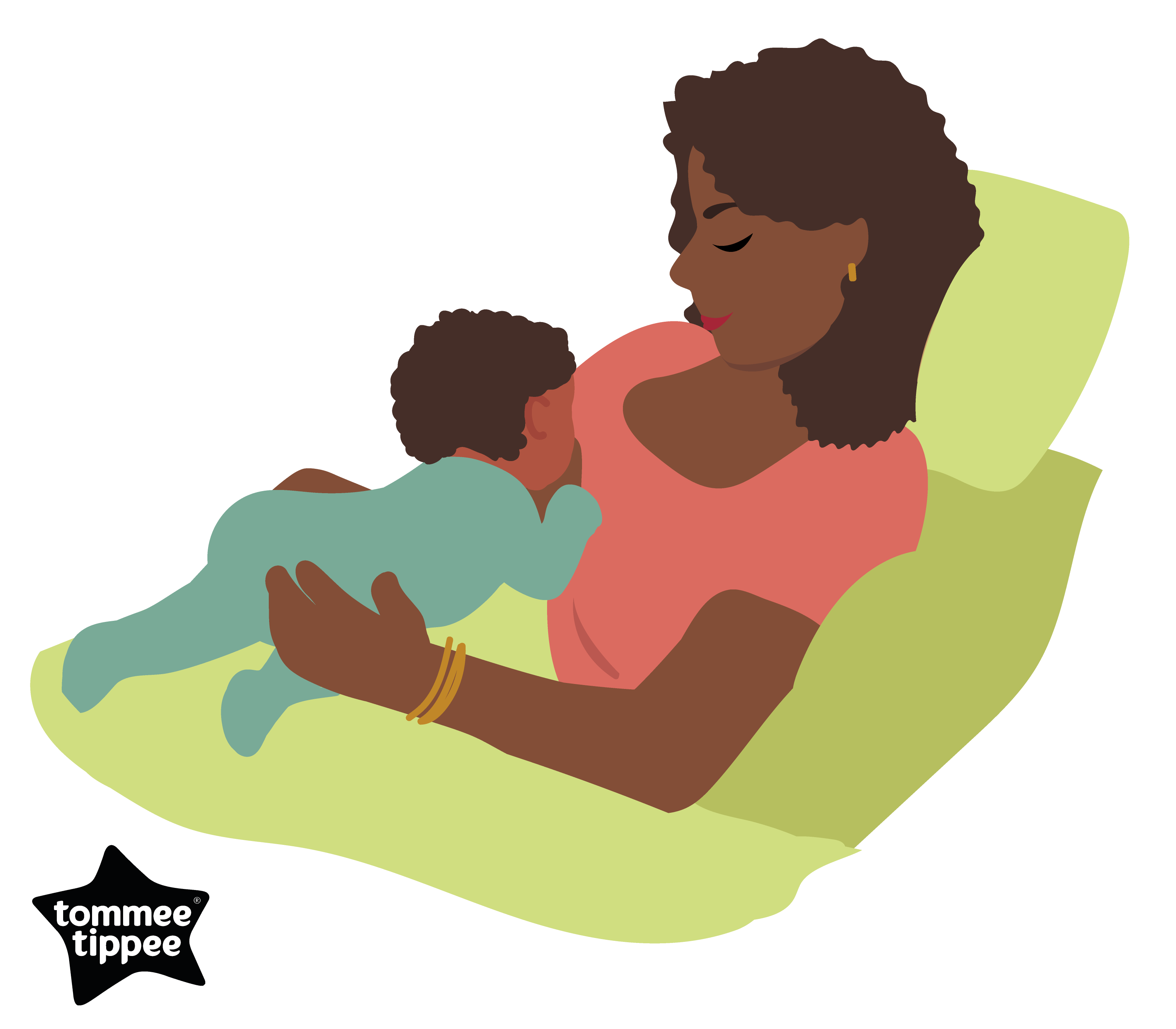
Side-lying
Breastfeeding lying down on your side is another popular position, particularly at night-time. You and your baby lie side by side facing each other. Rolling up a blanket and putting it behind your baby’s back will keep them from rolling away from you. Similarly, you can try using a pillow behind your back or between your knees for extra support. You can also cradle your baby with your forearm along their back to help them feed.
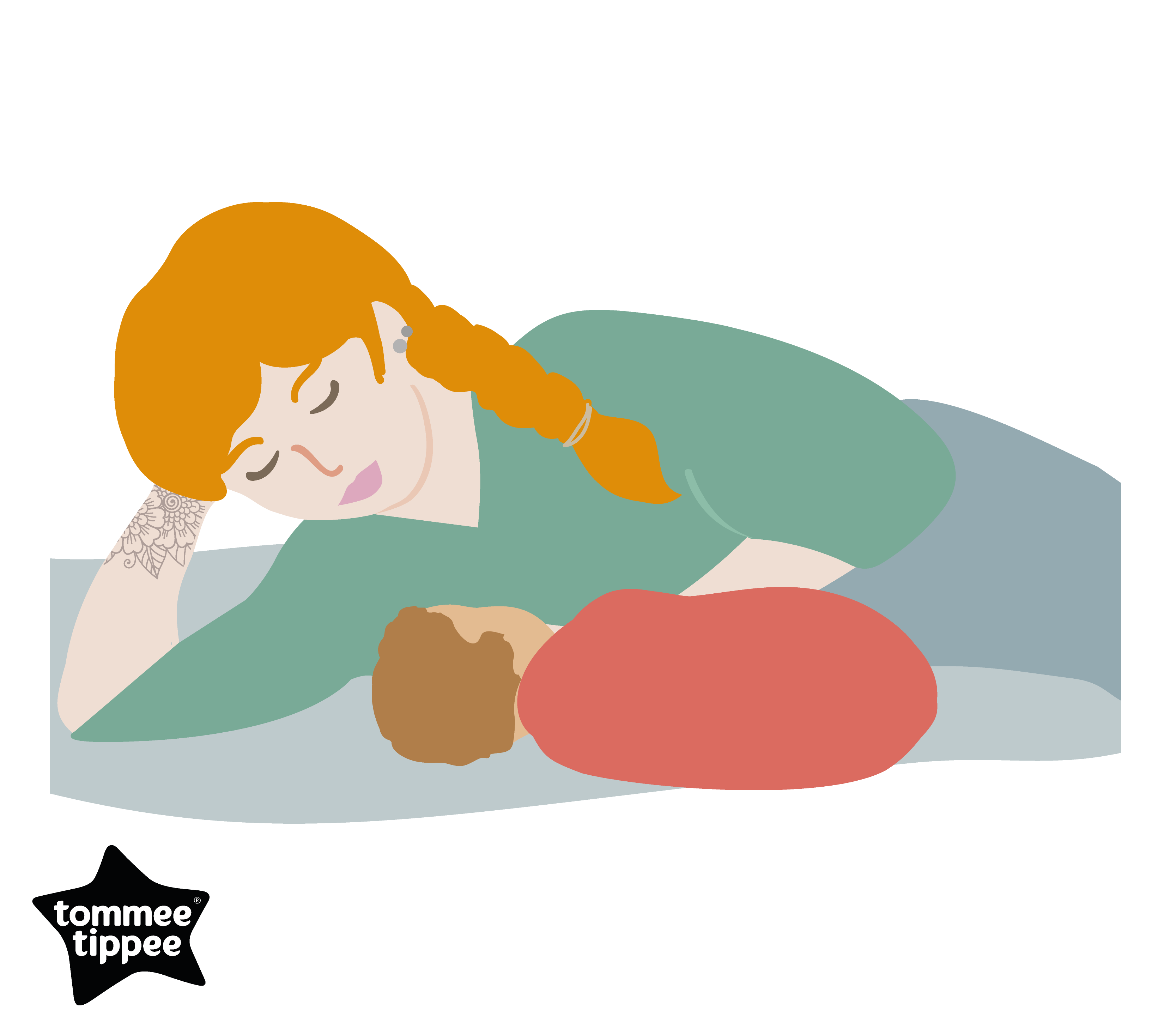
Cradle hold
The cradle hold breastfeeding position is the classic position that probably springs to mind when you think about breastfeeding. Sit upright and position your baby on his or her side, with their neck resting on your forearm and their body positioned against your stomach. Having a cushion behind you is recommended to avoid back strain.
If you decide to use a breastfeeding pillow on your lap, be sure it doesn’t position your baby higher than necessary to avoid them straining to latch. This position can often lead to baby’s head being forced into an angle whilst feeding so mum should be mindful that baby is in a straight line and not off to the side.

Cross-cradle hold
The cross-cradle hold is similar to the cradle hold, except that your arms switch roles so that your opposite forearm is supporting your baby’s body. This breastfeeding position is good for newborns or babies with difficulties latching on to the nipple. Simply hold your baby in the arm opposite the breast you’re feeding from (making sure to support their neck and head) and with your other hand support your breast and cradle your baby close to it.
Rugby hold
The football hold breastfeeding position (sometimes called the ‘clutch position’) can be achieved by cradling you baby in your arm – using your palm to support their neck – and nestling them closely against your side with their legs tucked underneath your arm. This position is particularly comfortable for newborn babies, it also helps your baby handle your milk flow easier if you have a forceful let down.
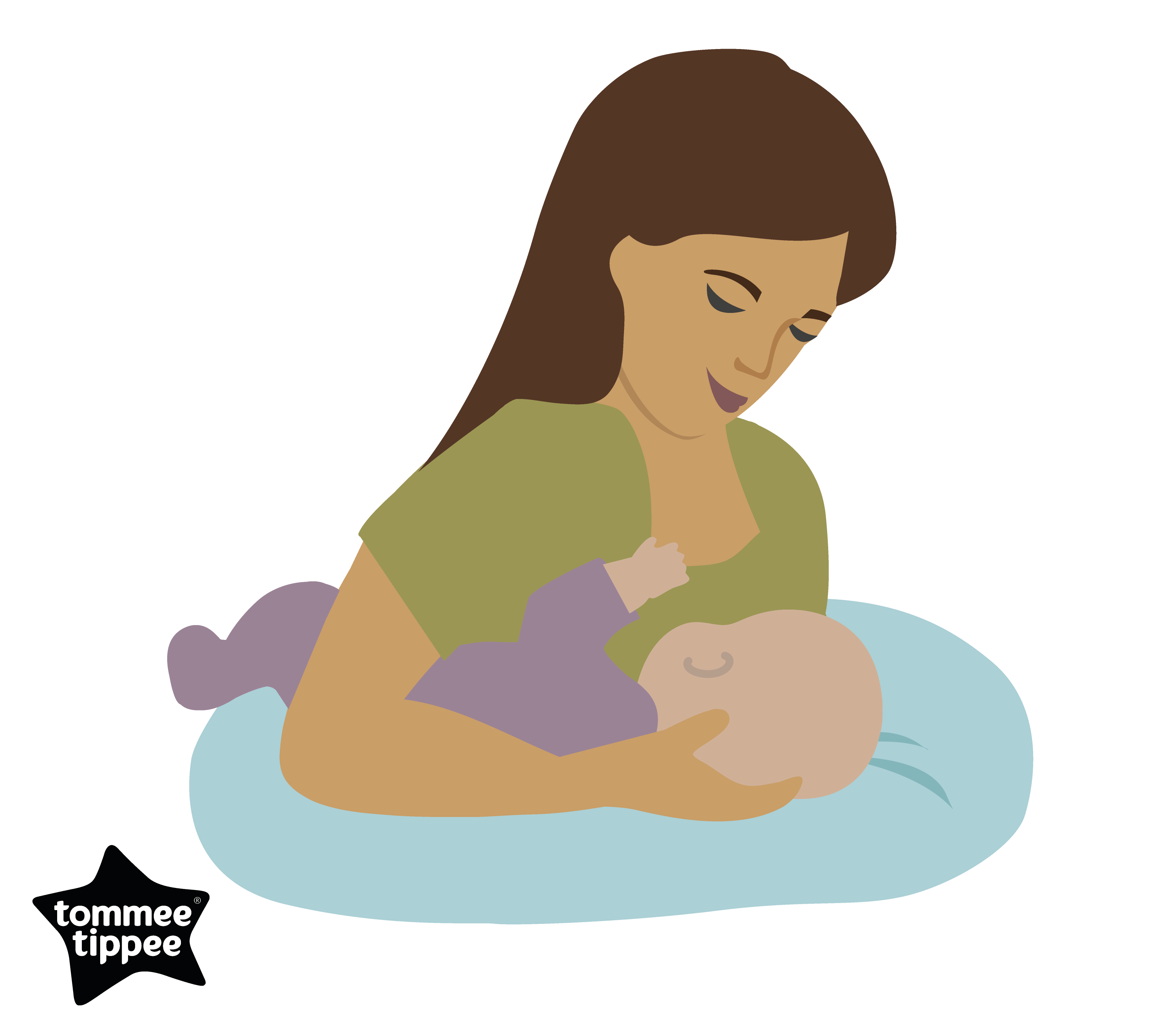
Keeping your baby latched while feeding
Sometimes babies will unlatch mid-feed. If your baby unlatches from your breast during feeding, these top tips should help them to re-latch. Give them a minute before reattaching as they may just want a rest from feeding.
- Hold your baby close
- Position your nipple with your baby’s nose
- Touch your nipple against their top lip so they open their mouth
- Make sure your baby’s chin touches your breast
Breastfeeding FAQ
How long should a breastfeeding session last?The time it takes to breastfeed your baby depends on a number of factors, such as your milk flow, your baby’s age and their alertness at time of feeding – a sleepy baby will likely take longer to feed than a fully rested baby.
A breastfeeding session with your baby might take anywhere between five and 45 minutes. The average feeding often lasts somewhere between 10 and 20 minutes.However, if they are frequently only feeding for five minutes at a time you may want to encourage them to feed for longer and endure that their weight gain is sufficient.
How do I get my baby to unlatch from my nipple?Breaking the suction before pulling your baby away from your breast is key to avoiding sore nipples. To help your baby unlatch, try gently inserting your little finger into the corner of your baby’s mouth in order to gently break the suction. Then quickly remove the nipple in case they latch on again.
You can also try very gently pulling down on your baby’s chin until their mouth opens wider, then unlatch the nipple.
Are there any breastfeeding positions to avoid?Certain breastfeeding positions can be bad for your baby and should be avoided, including…
- Having your baby’s head facing a different direction than their body – their head shouldn’t be turned.
- Hunching your body over your baby while feeding.
- Holding your baby’s body too far away from your breast.
Which breastfeeding positions are comfier if you’ve a C-Section?The football hold breastfeeding position can be more comfortable for mothers who have had a C-section, as it keeps your baby away from the abdominal incision. The laid-back or side-lying positions may also be a more comfortable option than sitting, as they both allow you to avoid having any weight or pressure on your wound.
